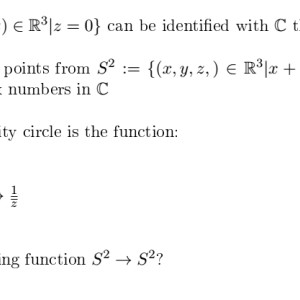Calculus / imaginary numbers and S^2
I need a good solution as fast as possible. If something is worded strange, it may be thanks to a translation mistake on my part.
Answer
Answers can only be viewed under the following conditions:
- The questioner was satisfied with and accepted the answer, or
- The answer was evaluated as being 100% correct by the judge.
 Martin
Martin
1.7K
The answer is accepted.
Join Matchmaticians Affiliate Marketing
Program to earn up to a 50% commission on every question that your affiliated users ask or answer.
- answered
- 1331 views
- $12.00
Related Questions
- Show that the MLE for $\sum_{i=1}^{n}\left(\ln{2x_i} - 2\ln{\lambda} - \left(\frac{x_i}{\lambda}\right)^2\right)$ is $\hat{\lambda} = \sqrt{\sum_{i=1}^{n}\frac{x_i^2}{n}}$.
- Easy money (basic calc)
- Calculus helped needed asap !!
- 3 Multi-step response questions
- Calc 3 Question
- Prove that $\int_{-\infty}^{\infty}\frac{\cos ax}{x^4+1}dx=\frac{\pi}{2}e^{-\frac{a}{\sqrt{2}}}(\cos \frac{a}{\sqrt{2}}+\sin \frac{a}{\sqrt{2}} )$
- Profit maximizing with cost and price functions
- Rouche’s Theorem applied to the complex valued function $f(z) = z^6 + \cos z$

